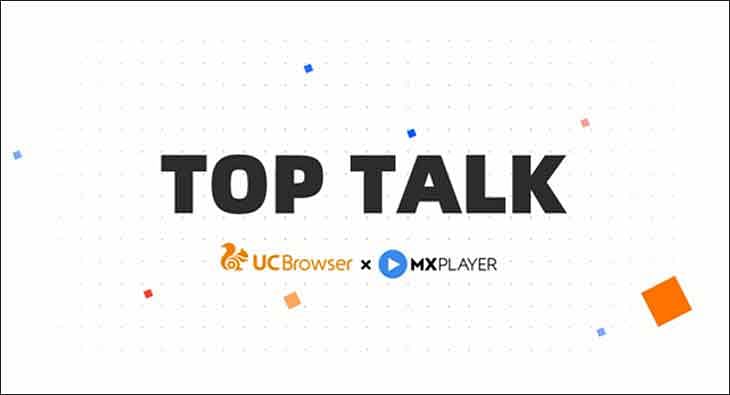Simeran Bhasin , Marketing Head, Fastrack & New Brands
It’s very difficult to create and maintain loyalty as loyalty in our target audience is a very different construct. There is absolutely no reason for them to come back to Fastrack tomorrow if they have bought a watch today, and if something else has caught their fancy. There is so much of pressure on that pocket money – be it tech product or fashion accessory – as the market is flooded with those. Unless each brand is reinventing product or communication constantly, there is no reason for youth to come back to the brand. So, the challenge is much higher as compared to the older age groups.

It’s very difficult to create and maintain loyalty as loyalty in our target audience is a very different construct. There is absolutely no reason for them to come back to Fastrack tomorrow if they have bought a watch today, and if something else has caught their fancy. There is so much of pressure on that pocket money – be it tech product or fashion accessory – as the market is flooded with those. Unless each brand is reinventing product or communication constantly, there is no reason for youth to come back to the brand. So, the challenge is much higher as compared to the older age groups.
Simeran Bhasin enjoys watching her ideas come to life, and as Marketing Head of Fastrack & New Brands, one can be assured that it’s constant refreshing of new ideas that’s making the company chart its success.
Fastrack, the brand which was re-launched a few years back targeting youth, has become a fashion accessory which boasts of being effortlessly cool. Bhasin played a key role in putting the brand on the growth trajectory.
In conversation with exchange4media’s Tuhina Anand, Bhasin talks at length about rebuilding Brand Fastrack. Q. Please give us a background on the brand Fastrack. Timex had entered the Indian market through a joint venture with Titan and that was our offering for the youth market. When that JV broke off in 1997 and Timex went independent, there was a gap in our portfolio and it only made sense to fill that need through our offering. Fastrack was launched as a range of watchwa under Titan and called Titan Fastrack. Subsequently, it grew from a range to a sub-brand, where Titan was upfront in the logo and the association was strong. In everything we did, including advertising, we used the jazzy version of the Mozart tune, which is Titan’s signature tune. So, the link with Titan was very strong. When we launched, we targeted predominantly the early jobber 23-30 year-old male executive. It was only a year or two later that we launched a line for women.
Q. How did you handle the re-jigging of Fastrack’s brand identity? The youth had changed over a couple of years, and based on research, we wanted to create a new identity for this TG, which had playful irrelevance as the core of the brand. Based on this, new communication was created where we changed our logo as we said that if we need to have a different identity, we need to launch it as an independent identity separate from Titan the brand. The old identity was strongly linked to Titan.
Q. So, how did things change and why was the brand re-launched? We took off and did well and then started stagnating in 2001-2003, and that’s when we decided to do a reality check. Titan had simultaneously launched the steel collection, which was an attempt to contemporise for a Titan audience. But what was happening was the collection in terms of looks, price point and consumer buying behaviour was very similar to Fastrack, including advertising. The parent brand needed to continue in their endeavour to keep it contemporary. We were simultaneously hearing in the market of the huge population of sub-25 and we said why don’t we move and reposition Fastrack to a younger audience and create a reason for our offering in the youth brand. We went into a rejig, which lasted a little over two years, where we looked at a core audience of collegegoers between 18 and 22 years and then extended audience of 15-25.
Q. Did it also have to do with the fact that people knew Fastrack as a brand from Titan, hence you could risk going independent?
Awareness of Fastrack was very low and was linked to Titan. There was no independent identity. Research had also shown that the fact that it had the backing of Titan was a positive assurance. However, kids didn’t like to be serious and sober like their parents. We needed to break away, so we changed the logo to bring in a youthful, spontaneous, energetic and fun identity, but removed Titan from the upfront association in the logo. We, however, kept it at the bottom, saying it’s a Titan product. This helped carry the assurance of the trusted Titan brand. We stopped using the Mozart tune in advertising as we didn’t want any strong upfront.
We launched with new products, a new identity, new advertising and a new logo in June 2005. The year took off so well that we ran out of stock very quickly and we ended the year with a 150 per cent growth and the demand was growing continuously. Next year, we took another 100 per cent growth.
Simultaneously, when Fastrack launched in its new avatar, we launched the first brand extension – eye gear. We signed up John Abraham as the brand ambassador and that too took off with the same price point and similar persona. John was the ambassador as we felt a relatively lesser known category like eye gear in India needed a face to make the category relevant and bring it into peoples’ consideration. The penetration of sunglasses in India is 5 per cent. The size of the market could be around Rs 500 crore. We have discovered that sunglasses are a different ballgame as it’s an upfront fashion accessory. Based on our research, we had got the response that people felt sunglasses were only for celebrities, rock stars and people in the fashion industry.
Q. Tell us about your foray into the digital medium and experiments with social media.
The involvement of the Fastrack consumer in the brand is very high. To cash in on that, over one and a half years back, we embarked on the digital media. In this day and age, where social media is growing, it’s an anathema for a youth brand to not have its own website. We got in place our website and a couple of months ago we embarked on using social media as a means to engage with our consumers. Social networking sites are a completely different ballgame, where you can’t intrude and do banner advertising. We use that media to essentially watch, learn and observe and listen to what consumers are saying and participate without intruding.
Communities are a big thing where consumers start on their own based on their interests. On Orkut, we realised that even before we started our websites consumers had established 15-20 communities of Fastrack. They had members joining and growing month on month. Today, on Orkut we have over 50 communities started by consumers who are fans of Fastrack watches and sunglasses. On Facebook, we have taken a slightly different act as it’s a far more niche social networking site. We started our own communities – ‘Life on the Fastrack’ and ‘Bikers on the Fastrack’. We have started a brand page where we put up whatever is happening on the brand – new campaigns, new forums or anything that Fastrack wants to discuss. We keep in touch with communities started by other users to let them know that if they want authentic information, they don’t have to go searching online, but they can get it from us and get first hand information.
Recently, we started a process wherein before launching a collection we take feedback from a panel of consumers online by sending a questionnaire and product pictures. We do this with people who are members of one or more of our communities. It’s quite a pleasure to get these frank opinions, because compared to traditional research, online is a very casual medium as compared to the traditional.
Q. Please elaborate on your re-launch.
We conducted research, where we shared products and communication and realised that our price points were really high for our TG. We are targeting someone who gets pocket money, which is a nebulous term in India. Some get it, some don’t. Some get it as maintenance money, while some don’t get it, but get everything they want. Our average price, which was about Rs 1,700-Rs 1,800 was just too high for that TG. Also, the product we had was not cutting ice with the younger audience because they were now seeing the Esprits and Swatches of the world, which had come at a higher price point but were creating desire for a very different fashion look. Then there were Chinese models priced at sub-500 and very affordable.
We realised that there was a big gap between this sub-500 and Rs 3,000, which is where the fashion brands started. That’s where we decided to peg ourselves, but we consciously kept 75 per cent of our collection at sub-1500 as no one was present there and it was big opportunity. We had to design watches that were funkier and keep it in line what the fashion brands were creating an aspiration for. We undertook a design overhaul and put in place a design exercise and got around 100 new designs. We decided to re-launch with this collection and drop all the old collections.
Q. Do you think a communication could address the issue of hesitance and help people to feel more comfortable wearing sunglasses?
We have been toying around with this idea and in ‘Johnny don’t cry’ ad, we didn’t talk about fashion but function, which said if you wear sunglasses on a bike, you won’t have tears as sunglasses would protect you from dust. However, we are a fashion and a fun brand, so we can’t get so serious to talk about protection, which we did in one ad. We have chosen to talk back about fashion and looks for the Fastrack brand. Otherwise, we will have a split personality as watches don’t talk about functionality, but all the fun stuff.
We needed to drive more synergies and move towards a common communication. Across the world, too, fashion brands have a common theme of communication across categories. The brand should have the same look and not look like two brands when out in the market. If you have to drive synergies, then you must have one look, one tone, one voice and a single message going out. Perhaps, if sunglasses contributed to 80 per cent of the market, then the call would be different, but the fact remains that we are a watch brand to begin with and watches are and for quite sometime to come would be our mother category. When we do on ground activity, we do eye gear trials to induce people and that’s when we talk function. But when using mass media, we will talk the same language across categories.
Q. Do you think after the re-branding, Fastrack is on the right track? Sunglasses and watches had been growing 100 per cent for the first 2-3 years after the re-launch. Last year, we took in growth of 50 per cent after three years of growing at 100 per cent. When we started the re-launch, Fastrack the brand was worth about Rs 29 crore and we have grown almost ten times of that over the last three years. I think the decisions we have taken have proved that we have been in the right direction. Today, the brand is present in over 3,000 outlets in the country and continuing to grow strong. Fastrack is actually among the few brands where people come asking for the brand. We have adopted a fashion based strategy, where we launch about 3-4 collections in a year in both categories. From this year, for greater synergies we have worked on a common theme for both categories and product. Collection-based strategy has helped us very well. We have consumers today who are so fanatic about the brand that they buy a watch from every single collection.
Q. Is it difficult to create a loyal customer in the TG that you are targeting?
It’s very difficult to create and maintain loyalty as loyalty in our target audience is a very different construct. There is absolutely no reason for them to come back to Fastrack tomorrow if they have bought a watch today, and if something else has caught their fancy. There is so much of pressure on that pocket money – be it tech product or fashion accessory – as the market is flooded with those. Unless each brand is reinventing product or communication constantly, there is no reason for youth to come back to the brand. So, the challenge is much higher as compared to the older age groups.
We have been fortunate so far, and I say so far, because if we have a loyal base, it may not be true one month down the line. We recently conducted a customer satisfaction study and found that our base of loyal customers is much higher than the benchmarks we have seen in some of the other brands. We are proud to say that our loyal consumer base suggests that 91 per cent would recommend Fastrack, 85 per cent would themselves buy the brand, which is high as compared to other watch and youth brands.
Q. What do you think are the attributes that helped the brand click and connect in the market? I think it has been twin approach of constantly innovating on product design, yet being affordable, and to reach out to consumers in a language that connects. We launched with ‘how many you have’, which is a grammatically incorrect statement spoken in a colloquial manner. It’s not your typical fashion brand talking down saying you must look cool and you must look like me. With our advertising, we were able to relate to the youth in a setting they were familiar with.
Q. Why did Fastrack change its tagline to ‘Move on’ recently?
We had embarked on an exercise a year ago with Santosh Desai, where the brief to him was that we have two categories, and in future as fashion brands we want to extend to more categories. At that point of time, we had different advertising and were not on the same theme. We were uncomfortable with continuing with that as we felt the need to synergise and bring the category together.
‘How many you have’ worked well for watches, but not as strongly for sunglasses. It would have not worked for sunglasses as penetration is only 5 per cent. Based on that, we worked with Santosh saying we need a platform that works for all our brands across accessory categories and bring synergies between categories.
We also looked at the brand identity and whether any change was required for that, as a result we refined our brand identity as research showed it needed a bit of tweaking and sharper focus in terms of its interpretation. From playful irreverence we moved to playful disruption. The core remained effortlessly cool as we want to project to the consumer unpredictability, friendly flirtatiousness and disruption.
‘Move on’ is not very different from ‘how many you have’ as the tagline came from multiplicity – the consumer truth being that youth get bored of the same thing and category truth being that you can’t be happy with just one. ‘Move on’ is multiplicity from a different level and came from the fact that youth preferred to be uncommitted in these few years that we were targeting. It’s only at a later stage that one starts firming decisions, be it career or marriage. The change was to pre-empt ourselves, so while ‘how many you have’ worked very well for us, we needed to change ourselves before the market told us to do so. If preference to remain uncommitted is the truth of the consumer, Fastrack must speak the same language, hence ‘Move on’ to keep trying new things.
Read more news about (internet advertising India, internet advertising, advertising India, digital advertising India, media advertising India)
For more updates, be socially connected with us onInstagram, LinkedIn, Twitter, Facebook Youtube & Whatsapp
UC Browser Turbo witnesses 5 million downloads amid positive reviews
Monthly active users expected to cross 10 million by FY20
UC Browser Turbo 1.6, a browser with minimalist design from UCWeb, part of Alibaba Innovation Initiatives Business Group, has witnessed strong downloads amidst positive reviews since its launch. The latest version comes with multiple improvements and has attracted a large number of users in India and Indonesia, and witnesses over 5 million downloads globally. The browsing app is expected to clock in 10 million monthly active users by the end of the fiscal year. UC Browser Turbo was launched across 148 countries and regions and is available in eight languages-- English, Indonesian, Vietnamese, Thai, Russian, Portuguese, Spanish and Arabic.
Talking on the success of the browser, Huaiyuan Yang, Vice President, UCWeb Global Business, said, “We are always looking for means to meet varied needs of our vast user base across the globe. UC Browser’s fast downloading and traffic saving features have earned us a strong reputation. UC Browser Turbo is a more convenient search tool with a clean interface and ad block feature for those who want a simple platform to navigate on. It is designed to provide users with a faster search experience. We are delighted at the positive response to the app.”
UC Browser Turbo 1.6 weighs 36M for 32-bit version and 42MB for 64-bit version and comes with a stylish design, smooth interface, fast surfing and downloading. The browser also has a new ‘Share’ function, giving users an option to share website pages and other details with another user. The browser offers multi-language support, which is customisable, and there is a Quick Search function as well Private Browsing and Free Cloud Acceleration within the app. Users have labelled the browser “modern”, “entertaining” and an interface that is “without any unnecessary features”.
UC Browser Turbo’s servers can stabilise downloads in record time. When set on high download threads, the download improves further. The browser allows users to download their preferred videos in advance so they can watch them even without an active internet connection. There is also the option of Customizable Homepage, allowing users to add preferred pages and websites to the home page from Bookmarks, and delete all the default sites to enjoy a blank homepage. The homepage also supports users’ pictures as a background.
Click here to download UC Browser Turbo.
Content, Audience & Monetization: The three pillars of OTT platforms
Karan Bedi, CEO of MX Player, talks about strategies for competition in the OTT sector
MX Player is marching into T2 and T3 markets after its success in T1 cities. Top Talk has invited Karan Bedi, CEO of MX Player, to reveal strategies for competition in OTT sector.
MX Player has become one of the most widely used OTT platforms in India, owning 180 million MAU in India. It has beautifully shifted from simply an offline video player to a streaming-featured platform.
Content, audience and monetisation are the three essential pillars for OTT Platforms. Given to the massive distribution, audience acquisition is the easiest part for MX Player. ‘Regarding to content, we have done a great job. Today we have over 100,000 hours of content on MX,’ says Bedi.
“If you have great content and no audience, you’re not going to go anywhere. If you have great audience and no content, you’re not going to go anywhere. If you don’t have monetisation, eventually you are not going to go anywhere,” he added.
T2 – T5 markets are massive, where user behaviors and demands are quite different from T1 markets. Most Indian families are single-TV households, the population in lower tier cities have even less access to entertainment avenues and screens.
“India is still far away from replacement of screens, now it’s just add-on.” For those users from T2 – T5 markets, when the number of screens rises, there will be more time spent on digital adding on to the time spent on traditional media. The online entertainment content consumption is going to be very high.
Regarding survival hints as an OTT player, Bedi suggests that getting the content supply lines in a manner that is robotic and scalable is really important. It’s also vital to figure out the right models out of 15 different monetization models.
Top Talk is a special series of talks, where we invite industry honchos to have insightful business discussion with us. Ankit Paul, Country Lead - Monetization Strategy and Programmatic at UC, is the anchor to lead the discussion.
UC Ads, is an innovative mobile marketing platform under UC. Leveraging 130 million MAU on UC Browser and 200 million global MAU on 9 Apps, UC Ads connects advertisers with their right audience at the right time. For more information, please visit ucads.ucweb.com or contact via UC-Ads@service.alibaba.com. For instant start of ad campaigns, register on https://ucads.ucweb.com/static/sso/pages/interRegister.html
Register on UC Ads (Web: https://ucads.ucweb.com/static/sso/pages/interRegister.html, mobile: https://mucads.ucweb.com/static/msso/#/clue )


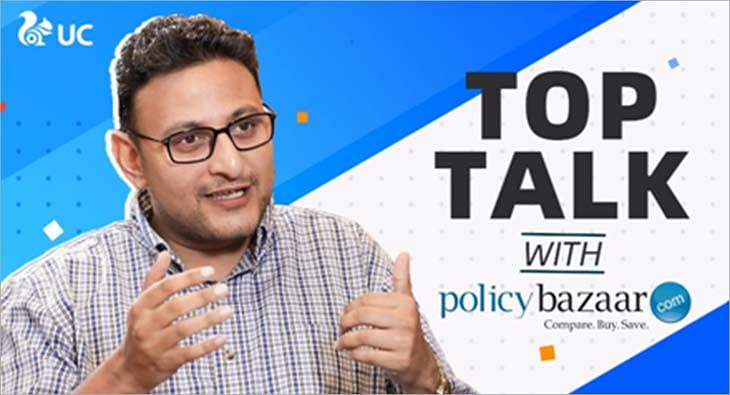
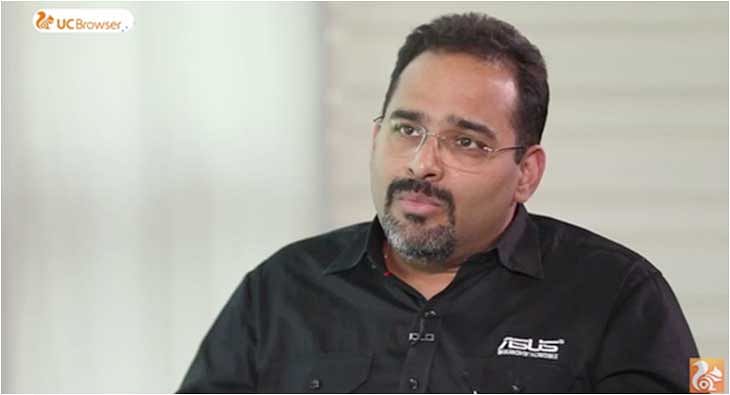
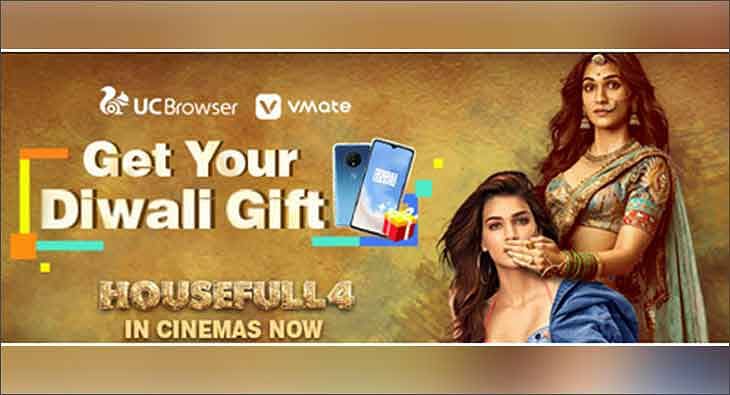
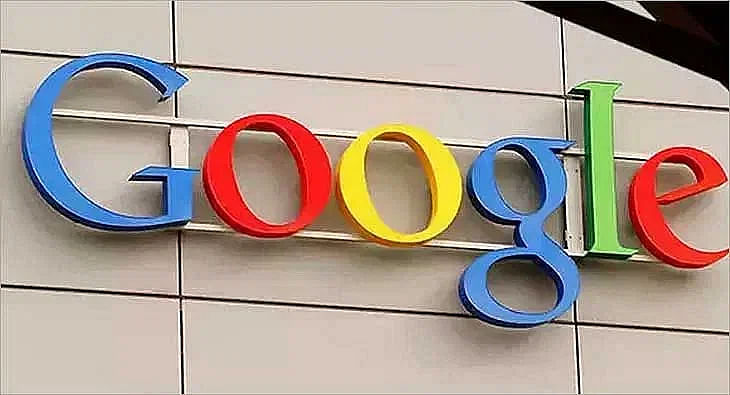





 Share
Share